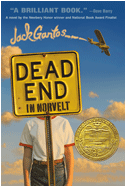Nick’s Picks: Losses and Legacies
Last spring the children’s book community lost several beloved authors and illustrators, including the hugely talented Leo Dillon, Jean Craighead George, Ellen Levine, and Maurice Sendak. In honor of their memory and their many accomplishments, we offer video and audio…

 A new book or project always starts with an idea. My participation in I.C. Springman’s More (Houghton, 2012) actually began in 1995 with an idea I had for a story about a crow that collects too much stuff, builds multiple nests in a tree, and ultimately feels worn down by the sheer number of objects he has to curate. But the tale was way too long and hopelessly preachy. I don’t like message-forward books, and although I had a suite of sketches I was eager to turn into finished paintings, I never got around to submitting them. Over the years I went back, searching for a better way to tell the story, but I couldn’t find a way in.
A new book or project always starts with an idea. My participation in I.C. Springman’s More (Houghton, 2012) actually began in 1995 with an idea I had for a story about a crow that collects too much stuff, builds multiple nests in a tree, and ultimately feels worn down by the sheer number of objects he has to curate. But the tale was way too long and hopelessly preachy. I don’t like message-forward books, and although I had a suite of sketches I was eager to turn into finished paintings, I never got around to submitting them. Over the years I went back, searching for a better way to tell the story, but I couldn’t find a way in. The American Library Association's Youth Media Awards, announced each January, are a high point on the book community's calendar. For this month's post, TeachingBooks.net contacted and recorded conversations with the award winners, asking them to share their inspirations and influences.
The American Library Association's Youth Media Awards, announced each January, are a high point on the book community's calendar. For this month's post, TeachingBooks.net contacted and recorded conversations with the award winners, asking them to share their inspirations and influences.
 I’ve been writing and illustrating children's books for over a decade now. Wow, how time flies! But people are often surprised to hear that I came to this profession unexpectedly. Just like Scaredy Squirrel (Kids Can, 2006), who jumps out of his nut tree into the unknown, I leapt into the world of children’s books. It all started with an art project and a teacher who sent my Leon the Chameleon (Kids Can, 2001) mock-up to a publisher.
I’ve been writing and illustrating children's books for over a decade now. Wow, how time flies! But people are often surprised to hear that I came to this profession unexpectedly. Just like Scaredy Squirrel (Kids Can, 2006), who jumps out of his nut tree into the unknown, I leapt into the world of children’s books. It all started with an art project and a teacher who sent my Leon the Chameleon (Kids Can, 2001) mock-up to a publisher.